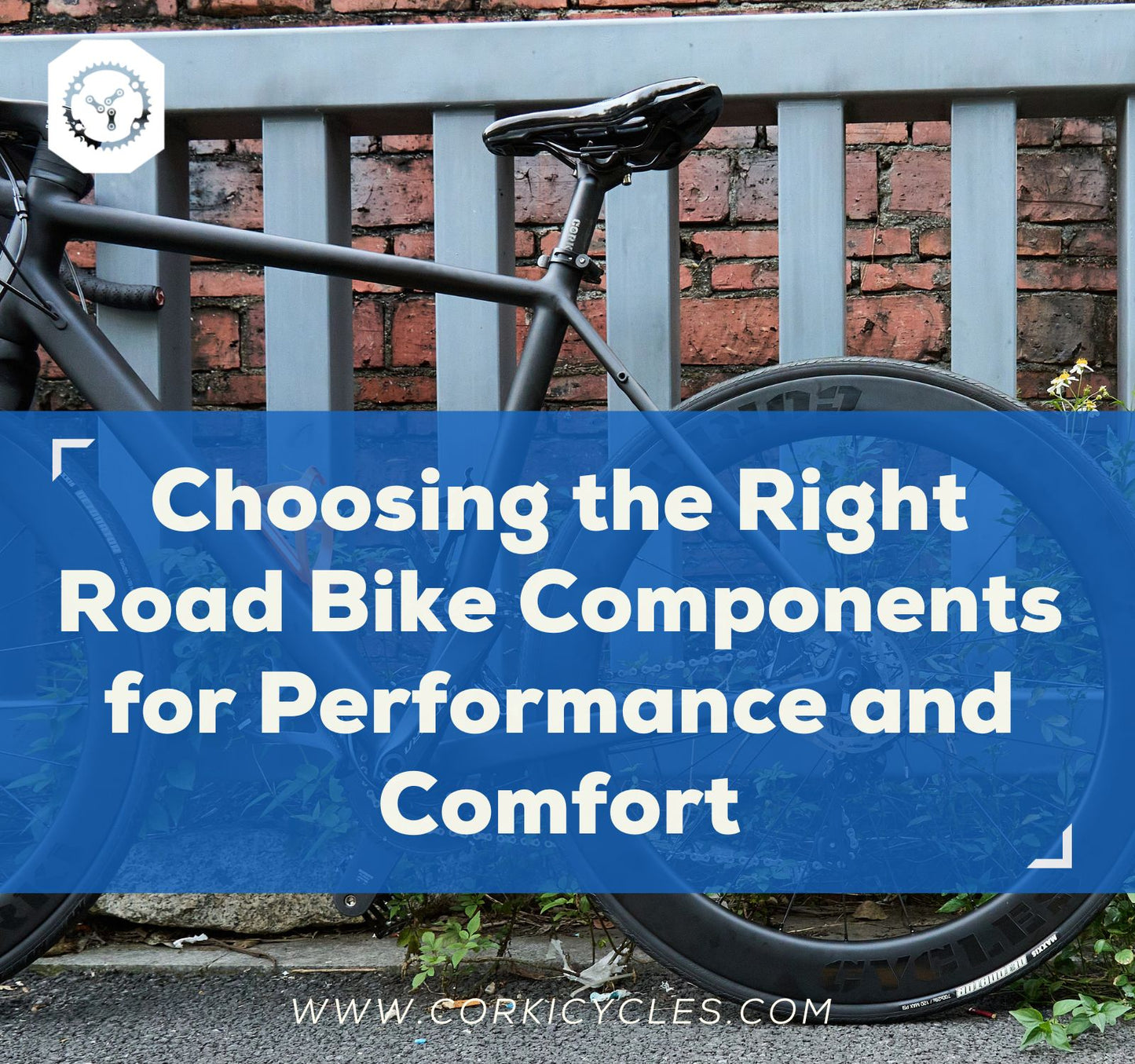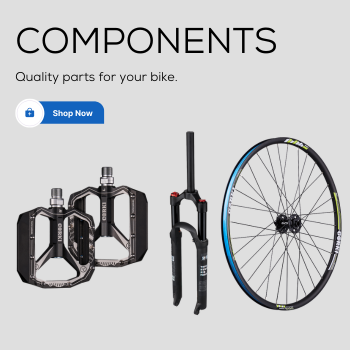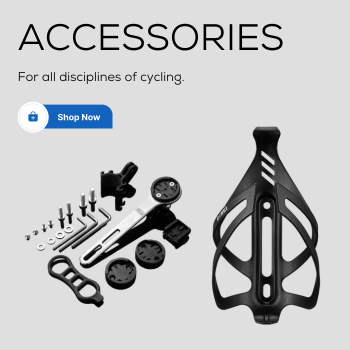
Choosing the Right Road Bike Components for Performance and Comfort
When picking parts for your road bike, you want to ensure they help you ride better and more comfortably. This is important whether you’re a pro or just getting started. In This guide, we will help you choose the right parts for your road bike to improve its performance and comfort.
Factors to Consider

It is important to consider several crucial factors before choosing your components.
Riding Style and Goals
Riding Style
Consider your primary riding style. Do you like racing, touring, staying fit, or leisurely rides? Your riding style will significantly influence the components that best suit your needs.
Performance vs. Comfort
When selecting bike parts, consider your preferred balance between performance and comfort. Competitive racers often choose lighter and more aerodynamic parts to go faster, even if it means giving up comfort. Long-distance tourers and recreational riders prefer components that maximize comfort. This includes wider tires and a more relaxed riding position.
Fitness Level
Your fitness level can also guide your component choices. Experienced cyclists prefer high-performance components to test their limits. But if you’re a beginner, you may want components that provide stability and are easy to use. Be clear about what you want to achieve and your preferences before making any decisions.
Terrain and Road Conditions
Terrain
Consider the terrain you will be riding on most frequently. Is your route predominantly flat, hilly, or a mix of both? Components that suit hilly terrain include a wider gear range and lower gearing options for climbing. In contrast, flatter terrain prioritizes aerodynamic features and higher gearing for speed.
Road Conditions
Assess the quality of the roads you’ll be riding on. Suppose your routes often feature potholes, gravel, or rough pavement. In that case, you’ll want components that enhance comfort and vibration damping, such as wider tires and a compliant frame. Conversely, on well-maintained roads, you may emphasize speed and aerodynamics.
Weather Conditions
Think about the weather conditions you’ll encounter. Disc brakes are a good choice when it’s wet out because they stop better and work the same every time. In contrast, rim brakes can be ideal in dry climates, given their lighter weight and ease of maintenance.
Budget Considerations
Initial Budget
Set a clear budget for your road bike components. Even though good parts cost more, make sure your budget matches what you can afford. Quality components can enhance your cycling experience but don’t have to break the bank.
Long-Term Savings
Investing in high-quality components can result in significant long-term savings. Components are less likely to need frequent replacements when built to be durable and low-maintenance. This can save time and money in the long run. Although they may cost more initially, these products’ long-term return is better.
Value vs. Cost
Consider the value of components versus their cost. Spending more on performance and comfort benefits is often smart in the long run. You can seek advice from experienced riders and professionals to maximize your budget.
When choosing components for your road bike, consider your riding preferences and environment. When it comes to cycling, there is no one-size-fits-all solution. This is because each cyclist has their own unique needs and preferences. Take your time to examine all the options available to you carefully.
How to Choose the Right Road Bike Components?

Every part of a road bike is important for how it feels when you ride. Let’s look at the world of road bike components and how they affect your performance and comfort.
Frame
The frame of your road bike is like its base, deciding how heavy and how well it absorbs bumps to make you comfortable while you ride. Here are the most common frame materials:
Aluminum
Aluminum is an excellent choice if you’re looking for a lightweight and budget-friendly frame material. Aluminum frames provide a responsive ride, making them perfect for riders on a budget. However, aluminum is known for its stiffness, which can lead to a slightly harsher ride, especially on rough terrain.
Carbon Fiber
Carbon frames are popular because they are lightweight, comfortable, and perform well. They also absorb road vibrations, which makes for a smoother ride. Cyclists who prioritize comfort and speed often prefer carbon frames. Carbon frames have different grades. Higher-grade carbon is stronger and lighter but more expensive.
Steel
Steel frames offer unmatched durability and a smooth ride. Steel frames are heavier than aluminum or carbon fiber frames. This makes them popular for long-distance touring and commuter bikes. The natural compliance of steel makes it a popular choice for riders seeking a comfortable ride on rough roads. Although steel frames may add some weight to your bike, they make up for it in durability and ride quality.
Fork
Forks play a pivotal role in ensuring your comfort by absorbing road vibrations. You can improve your ride by choosing the suitable fork material and design. Carbon and steel forks are the most popular choices, known for damping road chatter and providing a smooth and comfortable ride.
Wheel and Tire
When you combine your wheels and tires, it can greatly affect how your vehicle rides and performs. Consider the following factors when making your selection:
Tire Width and Tread Pattern
Your tires’ width and tread pattern are critical considerations. Wider tires (usually 25mm and above) offer more comfort and control, making them ideal for rough and uneven roads. On the other hand, narrower tires are preferred by those who want to go faster on smoother surfaces. The type of terrain you plan to ride on should also determine the tread pattern. Slick or semi-slick tires work well on smooth roads, while tires with deeper treads provide better grip on gravel and off-road trails.
Tubeless vs. Clincher Tires
The debate is ongoing between tubeless and clincher tires. Tubeless tires are more popular because they reduce the risk of punctures and flats. They also provide a more supple ride by allowing lower tire pressures. However, they require special rims and tires. Clincher tires are the more traditional option, with a tire bead that hooks into the rim. They are easier to install and maintain, making them an excellent choice for riders who prefer simplicity.
Wheel Materials
Wheel materials also significantly affect your bike’s performance and comfort. Carbon fiber wheels are light and perform well but can be expensive. Many riders on a budget like aluminum wheels because they are reliable and affordable. Some cyclists choose hybrid combinations to balance performance and cost. They use carbon fiber for the front wheel and aluminum for the rear wheel. The choice of wheel material should align with your riding style and budget.
Read “Road Bike Wheelsets: A Comprehensive Guide to Choosing the Right One” to learn more about the road bike wheels.
Brakes
Brakes are crucial in ensuring your safety and control while riding your bike. The type of brakes you use determines your ability to stop and how comfortable your ride will be. Therefore, choosing brakes that work well and suit your needs is essential to stay safe. There are two common options to consider:
Rim Brakes
Rim brakes are a classic choice known for their lightweight design and easy maintenance. They apply pressure to the wheel’s rim to slow down or stop the bike. While effective, they may not be as strong in wet conditions as disc brakes. However, rim brakes remain reliable and are favored by those who prefer easier maintenance.
Disc Brakes
Disc brakes are becoming more popular because they stop better and work consistently, especially in bad weather. They work by squeezing a rotor attached to the wheel hub, providing excellent control and modulation.
Rim or disc? This choice depends on your riding style and the conditions you may encounter. If you frequently ride in wet or hilly areas, disc brakes may offer you the peace of mind you need.
Drivetrain Components
Your bike’s drivetrain is where the power generated by your legs is transferred to the wheels. This important system has different parts. Each part has a job deciding your gear ratio, efficiency, and how your cycling feels.
Cranksets and Chainrings
Compact chainrings offer versatility. Standard chainrings provide high-speed performance, while sub-compact chainrings are designed for challenging climbs.
Derailleurs
Derailleurs are responsible for shifting gears. High-quality derailleurs ensure smooth gear changes, enhancing comfort and performance. Electronic shifting systems provide precise and consistent shifts.
Cassette
The cassette on your rear wheel offers a range of gears. The number of gears and the gear ratios within the cassette should align with your riding environment. A wide range of lower gears benefits hilly terrain, while a tighter ratio is ideal for flat, high-speed riding.
Chain
Chains come in various widths and durability levels. A durable chain ensures smooth operation and fewer maintenance hassles. Regular chain maintenance, such as cleaning and lubrication, ensures your drivetrain functions smoothly.
Conclusion
If you want to create the ideal road bike, it’s essential to understand the bike’s components. This includes the frame materials, brakes, wheels, tires, and drivetrains. These components are tailored to suit different cycling styles and preferences. It’s important to remember that there is no one-size-fits-all solution. What matters most is finding the right combination that fits your goals and preferences. The road ahead is full of possibilities.
Enjoy discovering the components that make your ride unforgettable.




